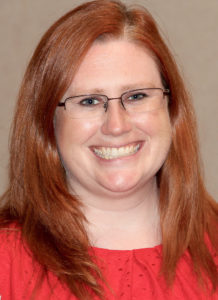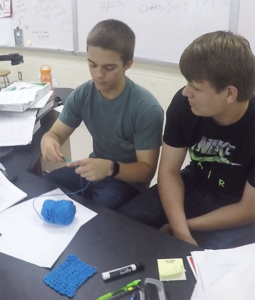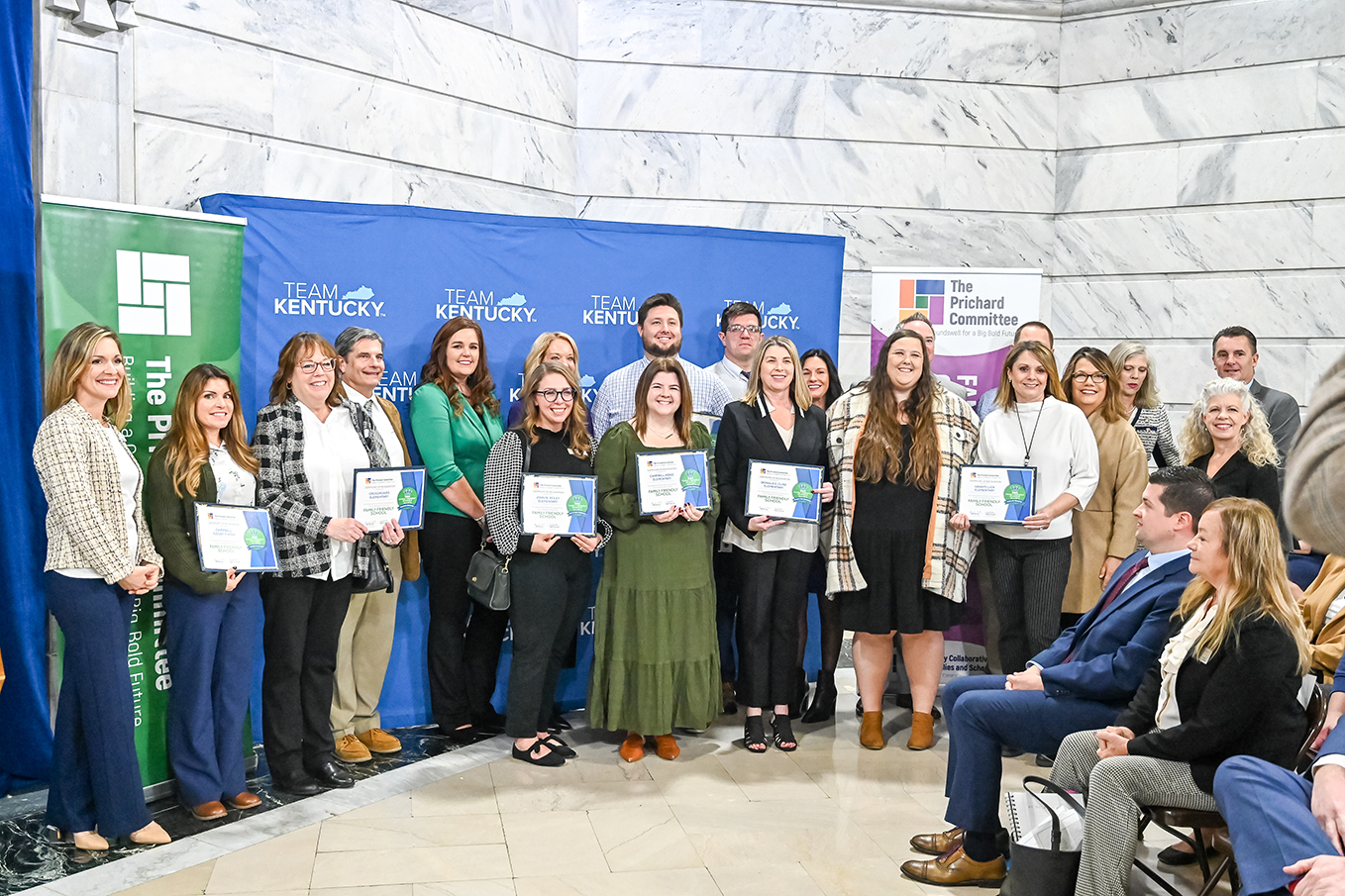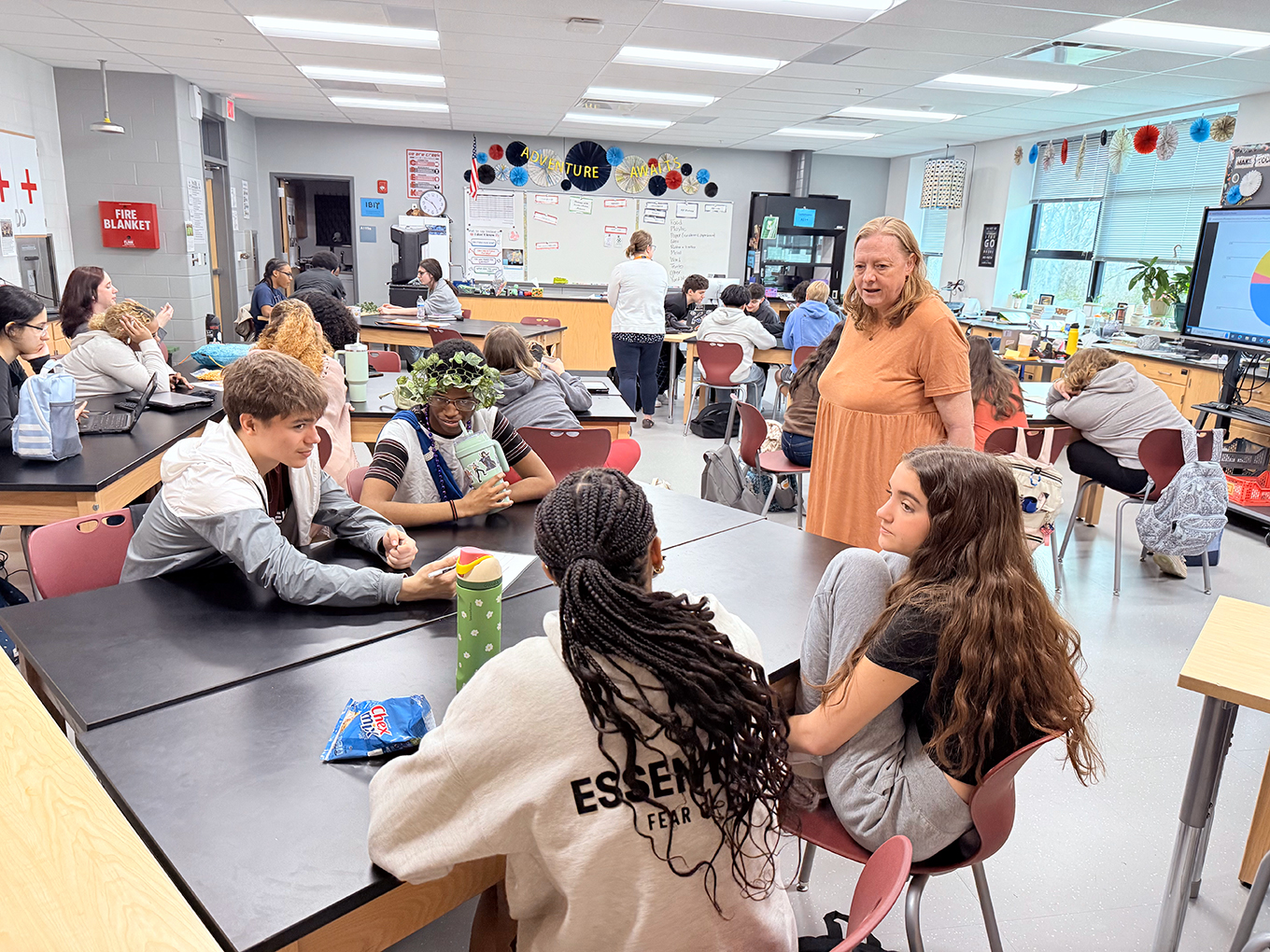
Carly Baldwin
By Carly Baldwin
carly.baldwin@boyd.kyschools.us
Starting something new in the classroom is scary.
I reflected at the beginning of my seventh year of teaching and found a huge hole in my practice. As much as I wanted to believe my classroom was student centered, the evidence did not match my conclusion. I realized that my students did not get the opportunity to answer their own questions while in my chemistry class. I saw a lack of student engagement, motivation and passion.
I saw a problem and I tried to solve it. I realized that the best way to include my students in solving what also was their problem was the beginning of our Genius Hour.
Genius Hour was born at Google, which allows its engineers to spend 20 percent of their time working on any pet project that grabs their attention. The idea was very simple. Allow people to work on something that interests them and productivity will go up. Google’s policy has worked so well that it has been said that 50 percent of Google’s projects have originated during this creative time.
Educators have taken this idea and modified it for the classroom. In Genius Hour, students explore their own passions and creativity. It gives students a choice in what they learn during a set period of time during school. I found that Genius Hour has rejuvenated my teaching practice from a sit-and-get learning culture to a student-driven environment. Students gain choice and voice through their passion projects.
And before you think this only works in language arts classes, my chemistry students have engaged in real-world research, design thinking and product development, which are skills essential to many STEM standards.
On Fridays, we transition from a lab into a chaotic mess of passion products. Students were introduced to the idea of Genius Hour using this video, and then given the instructions to pick an idea that can be researched and demonstrated by a creative product.
The best part of Genius Hour is that the product is shared globally! Students are held accountable for the quality of their product by presenting them to a larger community. Products can be shared on the internet, a community gathering, or, as in my case, with a 3rd-grade classroom. My students started creating better products and presentations because they did not stay in a box that included only the student and me.
My colleague and fellow National Board certified teacher Candi Williams teaches 3rd grade at Stopher Elementary School (Jefferson County). She saw similar attitude changes in her classroom when she decided to implement Genius Hour to increase student engagement and motivation. We decided that as much as we enjoyed collaborating, why couldn’t our students collaborate, too?
Genius Hour helped us connect an older, rural high school chemistry class in Boyd County to a younger, urban 3rd-grade class located hours away in Jefferson County. We used Zoom, an online video meeting tool, once a month in the spring semester. We broke students into groups and each 3rd-grade group was paired with a high school group. The students gave feedback and were critical friends for each other.

Two of Carly Baldwin’s students demonstrate how to crochet as part of Genius Hour. Baldwin, who teaches chemistry at Boyd County High School, uses class time each Friday to let students explore any idea as long as it can be researched and demonstrated by a creative product.
Submitted photo by Carly Baldwin
The connections made between my high school students and her little ones were priceless. Candi heard conversations throughout the process like, “I wonder what our big buddies would think about this?” and “I wish I could ask my buddy because I think they would know.” Conner, a sophomore, said “Are they presenting first? Because I’m not ready, and I want to make sure I know what I’m talking about before we get together.” Both classes put more effort into their products because they knew the other class was going to be watching.
In the end, Genius Hour became a way for me to truly let go and let my students research, create and present something they care about. Was implementing Genius Hour easy? Ha! Not in the slightest. This method of learning is often unfamiliar to students, and it takes a while to change the culture and the students’ habits needed to facilitate it well. Was it worth it? Absolutely.
A quiet boy that never spoke out in class developed his own video game with an Easter egg room with skeletons dancing to music. A group of boys that seemed like they couldn’t care less about chemistry researched, built and tested their own potato cannon and learned quite a bit about combustion.
Two picture-perfect straight A students had a really hard time with their newfound freedom. Watching them use their brains and creativity to design a breakout game for their peers was worth all of the chaos.
Carly Baldwin, who is National Board certified, teaches at Boyd County High School and has taught for eight years. Baldwin is highly involved in developing teacher leadership, as demonstrated by her involvement in Hope Street Group, ECET2 and Classroom Teachers Enacting Positive Solutions (CTEPS). She earned a bachelor’s in biology from Murray State University and a master’s in education from the University of Tennessee at Martin.




Leave A Comment